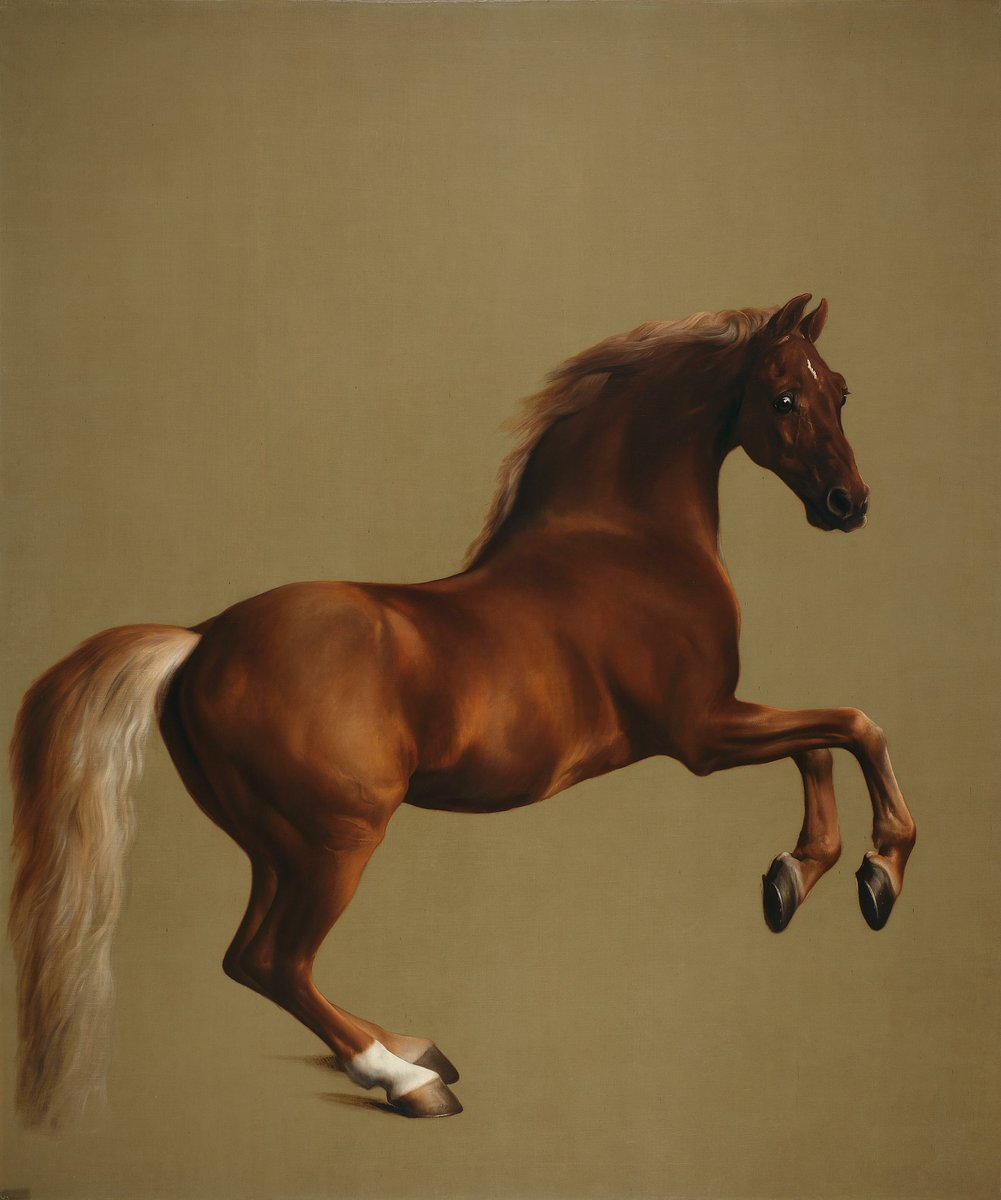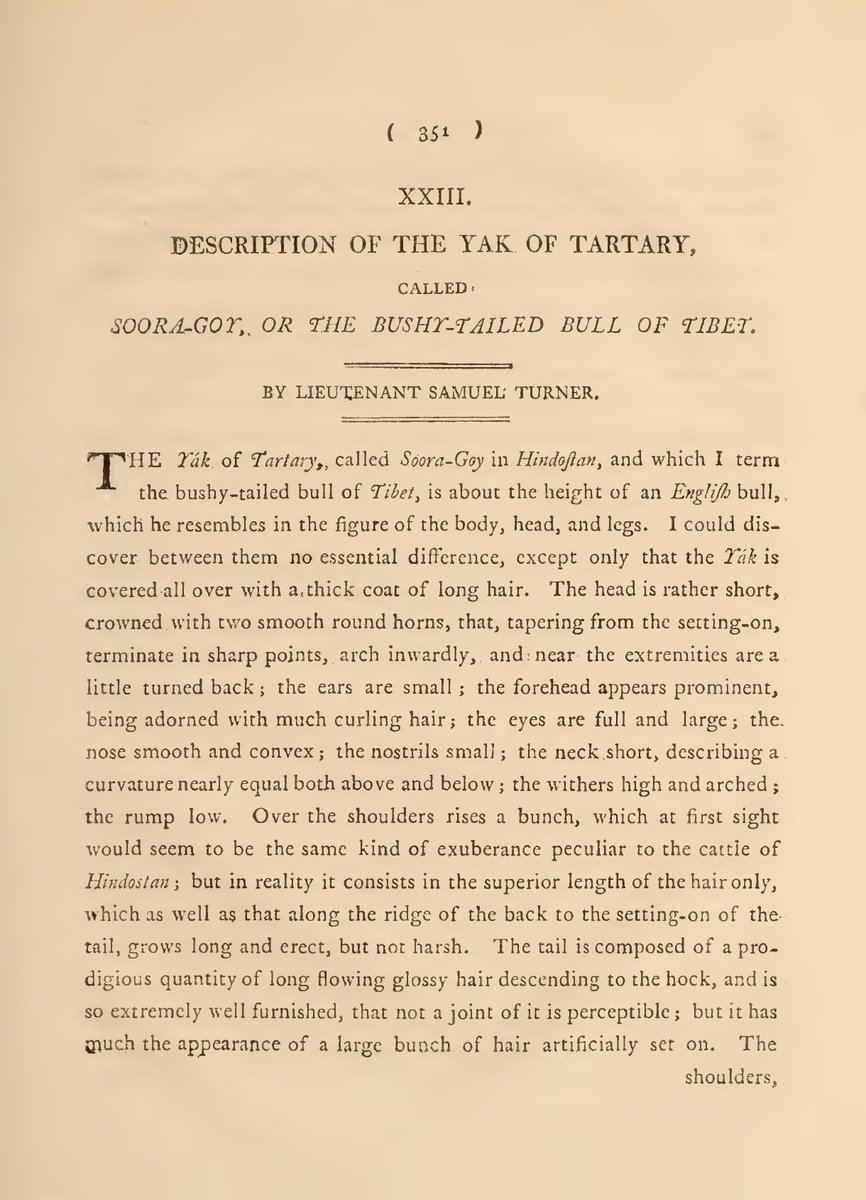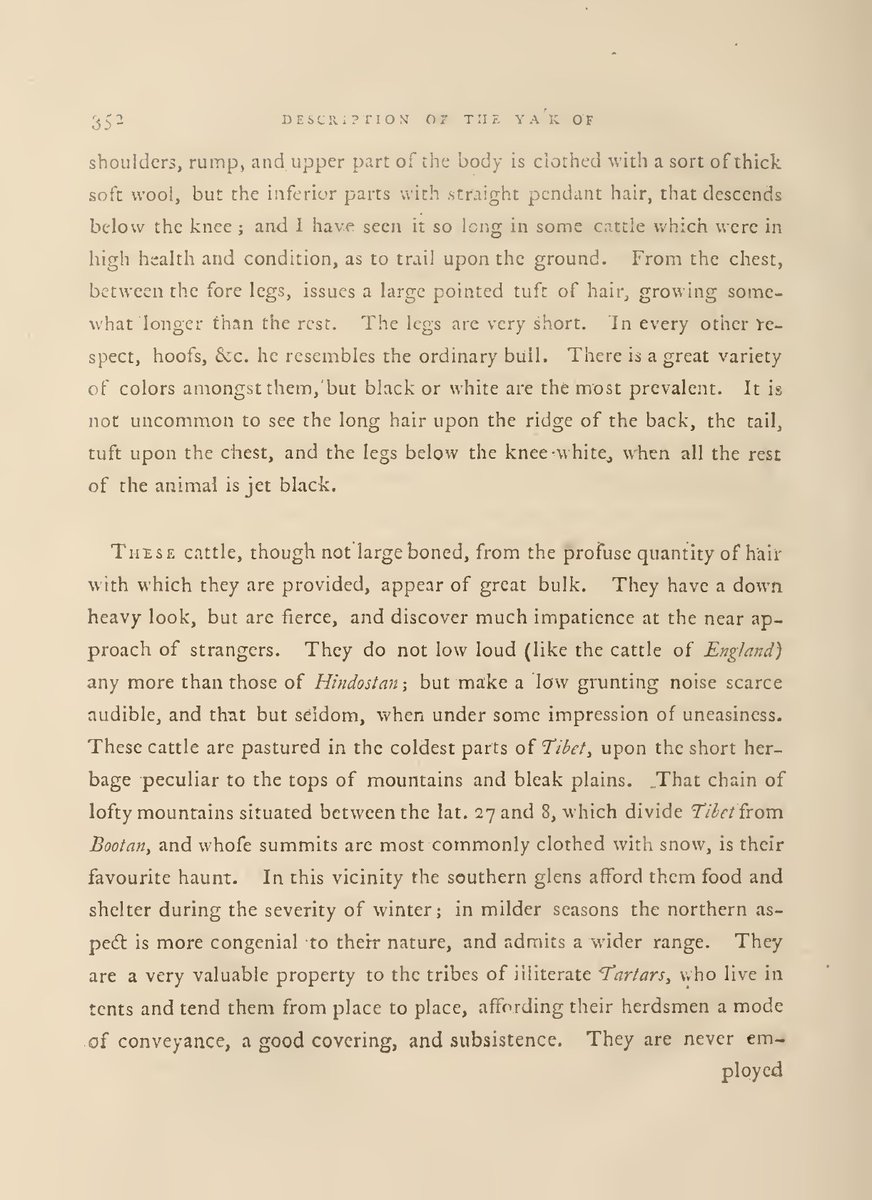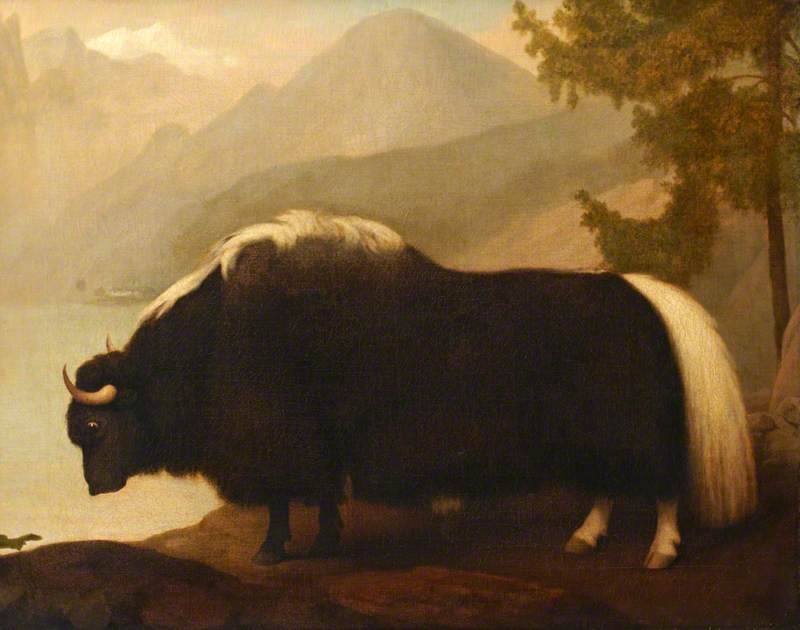Y is for YAK at the #lockdownbestiary @LockdownBestia1.
George Stubbs (1724-1806) is best known for painting horses, like this one, Whistlejacket. #notayak #HisforHorse #notsointeresting 1/14
George Stubbs (1724-1806) is best known for painting horses, like this one, Whistlejacket. #notayak #HisforHorse #notsointeresting 1/14
The central figure in our story—apart from George Stubbs, and the yak—is Samuel Turner (1759-1802), an army officer with the East India Company. #lockdownbestiary 3/14 https://doi.org/10.1093/ref:odnb/27864">https://doi.org/10.1093/r...
In 1783, Turner led a mission to Tibet and Bhutan, and his 1800 memoir—An Account of an Embassy to the Court of the Teshoo Lama in Tibet—remained the only account of that part of the world in English until Bogle and Manning in 1876. #lockdownbestiary 4/14
https://archive.org/details/accountofembassy00turn/mode/2up">https://archive.org/details/a...
https://archive.org/details/accountofembassy00turn/mode/2up">https://archive.org/details/a...
But here at the #lockdownbestiary, we aren’t so interested in the Himalayan commerce and diplomacy of British India at the end of the eighteenth century. We’re interested in yaks. 5/14
Turner’s excellent description of the yak was published in the fourth volume of Asiatic Researches in 1799, pp. 351-3. #lockdownbestiary 6/14
Warren Hastings, the corrupt governor-general of Bengal and, as it happens, Turner’s first cousin, had asked for a couple of yaks, which Turner sent to his menagerie in Calcutta, and Hastings later arranged for them to be transported to England. #lockdownbestiary #notayak 7/14
The lady yak sadly died en route, but the bull made it to England. He first lived at Purley Hall in Berkshire, where you can see him in the bottom left of this painting by an unknown artist. #lockdownbestiary 8/14
He later moved to Hastings’ estate at Daylesford in Gloucestershire, which is where, in 1791, he was painted by George Stubbs.
NB This is not what Gloucestershire looks like. The background is based on one of Turner’s sketches of Bhutan. #lockdownbestiary 9/14
NB This is not what Gloucestershire looks like. The background is based on one of Turner’s sketches of Bhutan. #lockdownbestiary 9/14
An engraving was later made of the painting, which was printed in Turner’s account of his embassy to Tibet. Here are the details from @BL_prints (curated by my splendid cousin--and friend of the @LockdownBestia1--Felicity) #lockdownbestiary 10/14 https://research.britishmuseum.org/research/collection_online/collection_object_details.aspx?images=true&objectId=3135250&partId=1">https://research.britishmuseum.org/research/...
In the absence of his lady friend, the yak wasn’t able to produce more yaks in England, though he did get it to shag other animals—very possibly zebus—though no fertile offspring ever seems to have resulted. #lockdownbestiary 11/14 https://en.wikipedia.org/wiki/Zebu ">https://en.wikipedia.org/wiki/Zebu...
So yaks in England never really took off—though there is this wonderful Pathé newsreel (towards the end of the Very Long C18th) which I assume documents the early history of the splendid herd that has lived at Whipsnade since 1944. #lockdownbestiary 12/14 https://www.youtube.com/watch?v=NH7GUa8BwDU">https://www.youtube.com/watch...
That herd goes from strength to strength. Here is its most recent member, a yet-unnamed calf born this year to Voldemort and Hermione. #lockdownbestiary 13/14 https://www.zsl.org/zsl-whipsnade-zoo/news/the-calf-who-is-yet-to-be-named">https://www.zsl.org/zsl-whips...
So that’s the story of Yaks—or, rather, a Yak—in eighteenth-century England. Some details were gathered from Caroline Grigson’s splendid volume, Menagerie: The History of Exotic Animals in England (Oxford, 2016). #lockdownbestiary #YisforYAK 14/14 https://global.oup.com/academic/product/menagerie-9780198714705?cc=gb&lang=en&">https://global.oup.com/academic/...

 Read on Twitter
Read on Twitter









